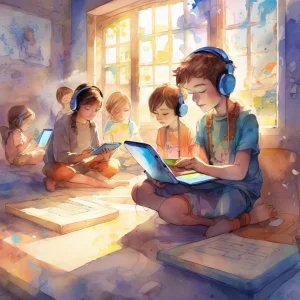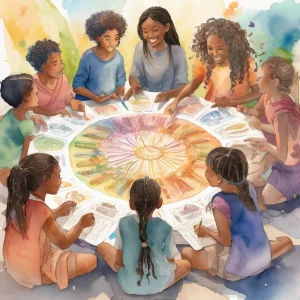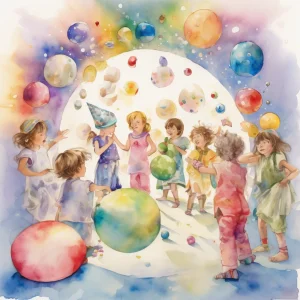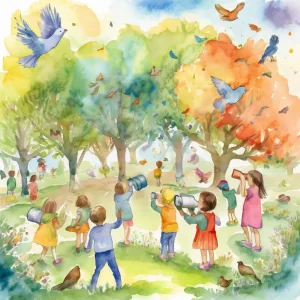Activity
Similar Activities
Empathy Tales: Digital Storytelling Journey
Children’s Age: 6–10 years
Activity Duration: 15 minutes
"Digital Storytelling with Empathy" is a creative activity for children aged 6 to 10, focusing on empathy, self-regulation, and language skills using digital tools. With a tablet o…
Activity Duration: 15 minutes
Enchanted Emotions Collage Journey
Children’s Age: 2–3 years
Activity Duration: 5 minutes
The "Feelings Collage" activity is designed for children aged 24 to 36 months to explore emotions and boost empathy, cognitive abilities, and creativity. With magazines, scissors, …
Activity Duration: 5 minutes
Picnic Adventure: Pretend Cooking Play for Toddlers
Children’s Age: 2–3 years
Activity Duration: 10 – 30 minutes
An imaginative activity where children (ages 2-3) engage in pretend cooking during a picnic adventure.
Activity Duration: 10 – 30 minutes
Musical Freeze Painting: A Creative Dance Adventure
Children’s Age: 3 years
Activity Duration: 10 – 20 minutes
An engaging activity combining painting with musical freeze dance to promote creativity and play skills.
Activity Duration: 10 – 20 minutes
Enchanted Coding Adventure Storytelling with Imagination
Children’s Age: 10–12 years
Activity Duration: 45 minutes
The "Coding Adventure Storytelling" activity is tailored for children aged 10-12 to enhance empathy, play skills, language abilities, and introduce basic programming concepts in a …
Activity Duration: 45 minutes
Empathy Through Sports: Team Building Sports Challenge
Children’s Age: 11–15 years
Activity Duration: 1 hour
The "Team Building Sports Challenge" is ideal for kids aged 11 to 15, promoting empathy through sports and teamwork. With sports equipment, paper, and markers, set up stations and …
Activity Duration: 1 hour
Seasonal Poetry: A Language Exploration Journey
Children’s Age: 6–10 years
Activity Duration: 30 minutes
Explore the "Language Exploration Through Seasonal Poetry" activity to enhance children's communication and empathy skills through seasonal poems. Gather materials like poems, pape…
Activity Duration: 30 minutes
Whispers of Nature: Eco-Puzzle Challenge
Children’s Age: 8–12 years
Activity Duration: 20 minutes
The "Eco-Puzzle Challenge" activity is a fun and educational way to promote empathy, play skills, and ecological awareness in children aged 8 to 12. Children work in small teams to…
Activity Duration: 20 minutes
Empathy through Dance: Expressing Emotions Creatively
Children’s Age: 6–10 years
Activity Duration: 25 minutes
"Empathy through Dance" is an engaging activity tailored for children aged 6 to 10 to foster empathy, moral growth, and language skills. Children will express emotions through move…
Activity Duration: 25 minutes
Empathy Tales: Cultural Storytelling and Communication
Children’s Age: 11–15 years
Activity Duration: 35 – 40 minutes
Explore the "Cultural Storytelling and Communication" activity for children aged 11 to 15, promoting empathy and language skills through diverse cultural stories. Gather picture bo…
Activity Duration: 35 – 40 minutes
Imaginary Adventures: Mini Bowling Feelings Story Game
Children’s Age: 2–5 years
Activity Duration: 10 minutes
An engaging activity promoting sensory development, creativity, reading, and storytelling.
Activity Duration: 10 minutes
Nature Shapes Adventure: Bird Watch & Scavenger Hunt
Children’s Age: 4–5 years
Activity Duration: 10 minutes
An outdoor activity for children aged 4-5 years combining bird watching and shape recognition.
Activity Duration: 10 minutes


























